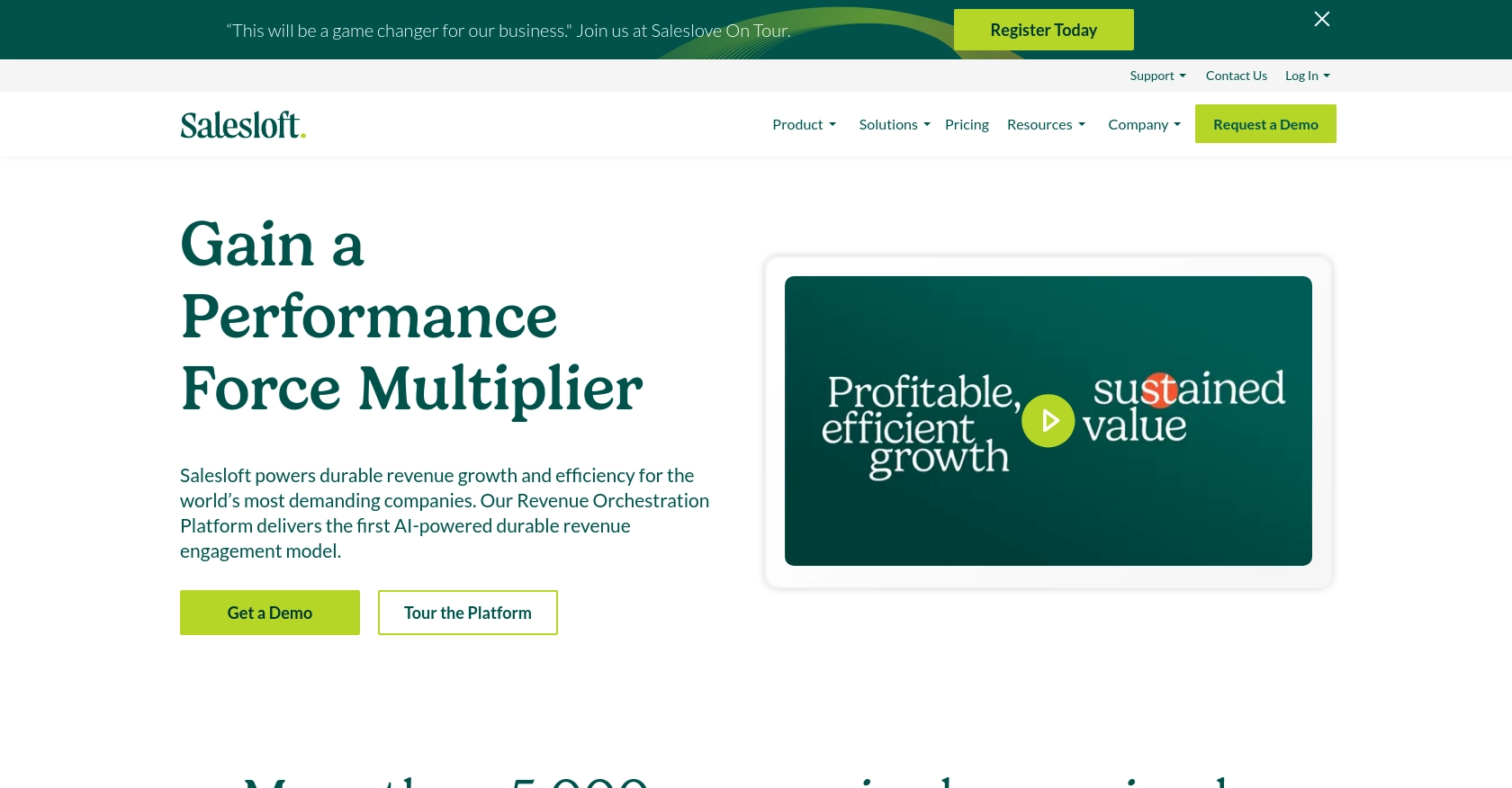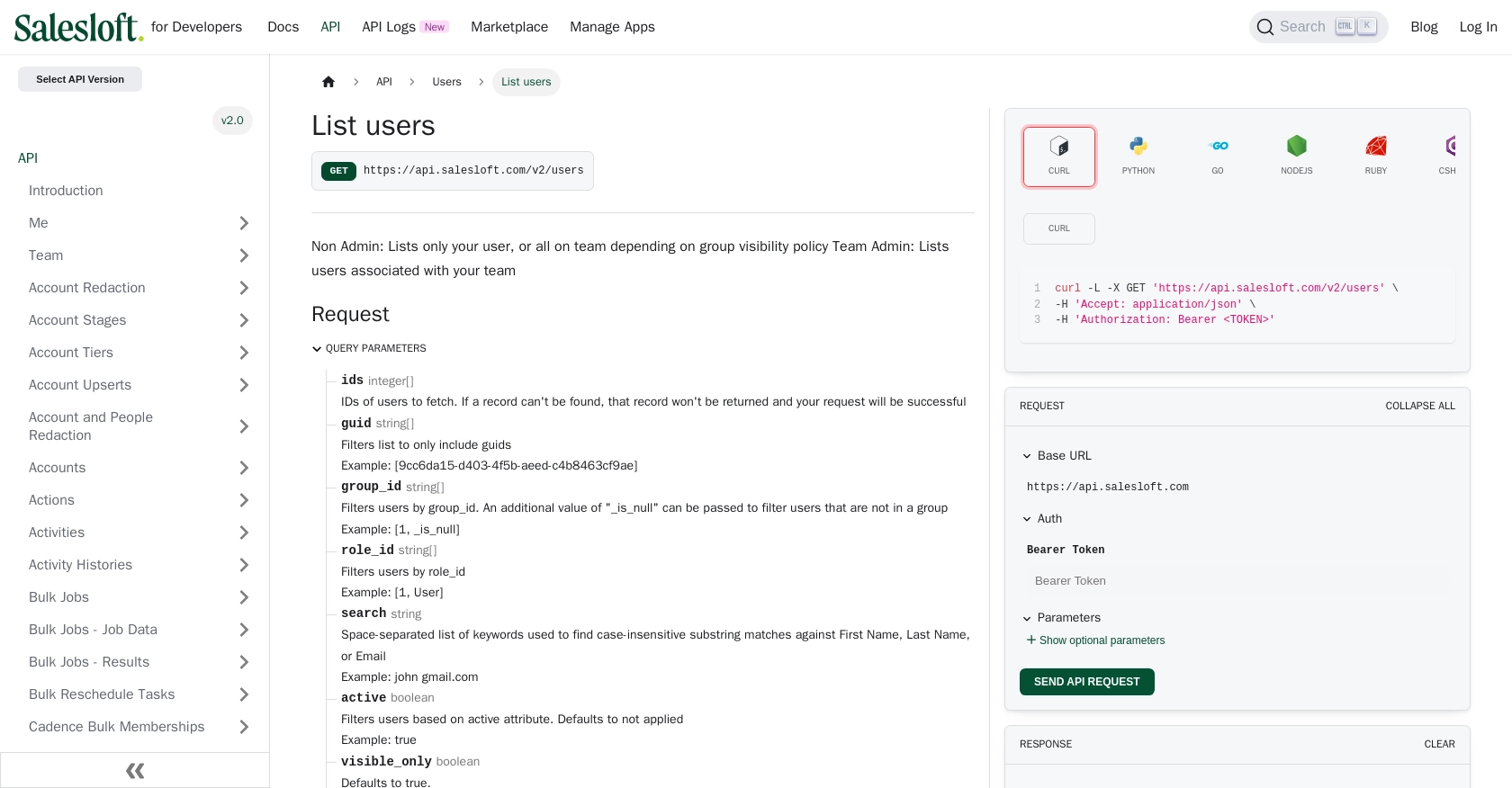Using the Salesloft API to Get Users in Python

Introduction to Salesloft API Integration
Salesloft is a powerful sales engagement platform that enables sales teams to enhance their communication and streamline their workflows. By providing tools for email tracking, call logging, and analytics, Salesloft helps sales professionals engage with prospects more effectively and close deals faster.
Integrating with the Salesloft API allows developers to access and manage user data, which can be crucial for customizing sales strategies and improving team performance. For example, a developer might use the Salesloft API to retrieve a list of users and analyze their activity to optimize team collaboration and productivity.
Setting Up Your Salesloft Test Account for API Integration
Before diving into the Salesloft API, you'll need to set up a test account. This will allow you to safely experiment with API calls without affecting live data. Salesloft provides a sandbox environment that mimics the production environment, making it ideal for testing and development.
Creating a Salesloft Account
If you don't already have a Salesloft account, you can sign up for a free trial on the Salesloft website. This will give you access to the platform's features and allow you to create an OAuth application for API access.
- Visit the Salesloft website and click on the "Sign Up" button.
- Follow the on-screen instructions to create your account.
- Once your account is set up, log in to access the Salesloft dashboard.
Creating an OAuth Application in Salesloft
To interact with the Salesloft API, you'll need to create an OAuth application. This will provide you with the necessary credentials to authenticate API requests.
- Navigate to Salesloft Account → Your Applications → OAuth Applications.
- Click on Create New to start a new OAuth application.
- Fill in the required fields, such as the application name and description, and then click Save.
- After saving, you'll receive your Application Id (Client Id), Secret (Client Secret), and Redirect URI (Callback URL).
Obtaining Authorization Code and Access Tokens
With your OAuth application set up, you can now obtain the authorization code and access tokens needed for API access.
- Generate a request to the authorization endpoint using your Client Id and Redirect URI:
- Authorize the application when prompted. Upon approval, you'll receive a code in the redirect URI.
- Exchange this code for an access token by making a POST request:
- Store the returned access_token and refresh_token securely for future API requests.
https://accounts.salesloft.com/oauth/authorize?client_id=YOUR_CLIENT_ID&redirect_uri=YOUR_REDIRECT_URI&response_type=codePOST https://accounts.salesloft.com/oauth/token
{
"client_id": "YOUR_CLIENT_ID",
"client_secret": "YOUR_CLIENT_SECRET",
"code": "YOUR_AUTHORIZATION_CODE",
"grant_type": "authorization_code",
"redirect_uri": "YOUR_REDIRECT_URI"
}For more details, refer to the Salesloft OAuth Authentication documentation.

sbb-itb-96038d7
Making API Calls to Retrieve Users from Salesloft Using Python
Now that you have set up your Salesloft account and obtained the necessary OAuth credentials, it's time to make API calls to retrieve user data. In this section, we'll guide you through the process of using Python to interact with the Salesloft API and fetch a list of users.
Prerequisites for Salesloft API Integration with Python
Before proceeding, ensure you have the following installed on your machine:
- Python 3.11.1
- The Python package installer
pip
Additionally, you'll need to install the requests library to handle HTTP requests. You can install it using the following command:
pip install requestsFetching Users from Salesloft API
To retrieve users from the Salesloft API, you'll need to make a GET request to the appropriate endpoint. Here's how you can do it using Python:
import requests
# Set the API endpoint and headers
endpoint = "https://api.salesloft.com/v2/users"
headers = {
"Authorization": "Bearer YOUR_ACCESS_TOKEN",
"Accept": "application/json"
}
# Make a GET request to the API
response = requests.get(endpoint, headers=headers)
# Check if the request was successful
if response.status_code == 200:
users = response.json().get('data', [])
for user in users:
print(f"User ID: {user['id']}, Name: {user['name']}, Email: {user['email']}")
else:
print(f"Failed to retrieve users: {response.status_code} - {response.text}")
Replace YOUR_ACCESS_TOKEN with the access token you obtained earlier. This script sends a GET request to the Salesloft API to fetch users and prints their ID, name, and email.
Verifying API Call Success and Handling Errors
After running the script, you should see a list of users printed in the console. If the request is successful, the status code will be 200. If not, the script will print an error message with the status code and response text.
Salesloft API provides error codes such as 403 for forbidden access and 404 for not found. Ensure you handle these errors appropriately in your application. For more details, refer to the Salesloft Request & Response Format documentation.
Handling Salesloft API Rate Limits
Be mindful of Salesloft's rate limits, which are set at 600 cost per minute. Each API call consumes a certain cost, and exceeding the limit may result in temporary access restrictions. For more information, visit the Salesloft Rate Limits documentation.

Conclusion and Best Practices for Using Salesloft API in Python
Integrating with the Salesloft API using Python provides a powerful way to access and manage user data, enhancing your sales strategies and team performance. By following the steps outlined in this article, you can efficiently retrieve user information and handle API interactions with ease.
Best Practices for Secure and Efficient Salesloft API Integration
- Securely Store Credentials: Always store your
access_tokenandrefresh_tokensecurely, using environment variables or a secure vault, to prevent unauthorized access. - Handle Rate Limits: Be aware of Salesloft's rate limits, set at 600 cost per minute. Implement logic to handle rate limit responses and consider using exponential backoff strategies to retry requests.
- Manage Token Expiry: Use the
refresh_tokento obtain a newaccess_tokenwhen the current one expires, ensuring uninterrupted API access. - Data Transformation: Standardize and transform the data fields retrieved from Salesloft to fit your application's requirements, ensuring consistency across your systems.
Streamline Your Integrations with Endgrate
While integrating with Salesloft API can be straightforward, managing multiple integrations can become complex and time-consuming. Endgrate offers a unified API solution that simplifies integration processes, allowing you to focus on your core product development.
With Endgrate, you can build once for each use case and leverage a single API endpoint to connect with multiple platforms, including Salesloft. This not only saves time and resources but also provides an intuitive integration experience for your customers.
Explore how Endgrate can enhance your integration strategy by visiting Endgrate's website and discover the benefits of outsourcing your integration needs.
Read More
- https://endgrate.com/provider/salesloft
- https://developers.salesloft.com/docs/platform/api-basics/oauth-authentication/
- https://developers.salesloft.com/docs/platform/api-basics/request-response-format/
- https://developers.salesloft.com/docs/platform/api-basics/filtering-paging-sorting/
- https://developers.salesloft.com/docs/platform/api-basics/rate-limits/
- https://developers.salesloft.com/docs/api/users-index/
Ready to get started?
